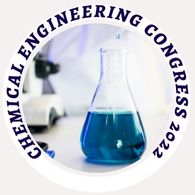Crystallization
The crystallization process consists of two major events, nucleation and crystal growth which are driven by thermodynamic properties as well as chemical properties. Crystallization, the process of solidifying from solution, is highly complex. Seed particles or nuclei form in the solution and other molecules then deposit on these solid surfaces. Crystallization is based on the principles of solubility: compounds (solutes) tend to be more soluble in hot liquids (solvents) than they are in cold liquids. If a saturated hot solution can cool, the solute is no longer soluble in the solvent and forms crystals of pure compound. Impurities are excluded from the growing crystals and the pure solid crystals can be separated from the dissolved impurities by filtration.
Many compounds have the ability to crystallize with some having different crystal structures, a phenomenon called polymorphism. The DTB crystallizer has an internal circulator, typically an axial flow mixer – yellow – pushing upwards in a draft tube while outside the crystallizer there is a settling area in an annulus; in it the exhaust solution moves upwards at a very low velocity, so that large crystals settle and return to the main circulation while only the fines, below a given grain size are extracted and eventually destroyed by increasing or decreasing temperature, thus creating additional supersaturation.
- Nucleation and Crystal Growth
- Supersaturation
- Polymorphism
- Polarity and Ionic Strength
- Fractional Crystallization
- DTB Crystallizer
- Evaporative Crystallizers
Related Conference of Crystallization
Crystallization Conference Speakers
Recommended Sessions
- Biotechnology And Biochemical Engineering
- Chemical Engineering : A Unit Operation
- Chemical Engineering Thermodynamics
- Chemical Industry And Market Analysis
- Chemical Reaction Engineering And Catalysis
- Crystallization
- Electrochemistry And Electrochemical Engineering
- Environmental Engineering And Elementary Biology
- Fluid Mechanics in Industries
- Industrial Safety And Pollution Control
- Mass Spectrometry
- Mass Transfer As Separation Processes
- Material Science And Engineering
- Mechanical Operations
- Modelling Simulation And Optimization
- Nano-Chemistry and Nanotechnology
- Physical Organic Chemistry
- Polymer Science And Engineering
- Process Heat Transfer
- Transport Phenomena And IPC

